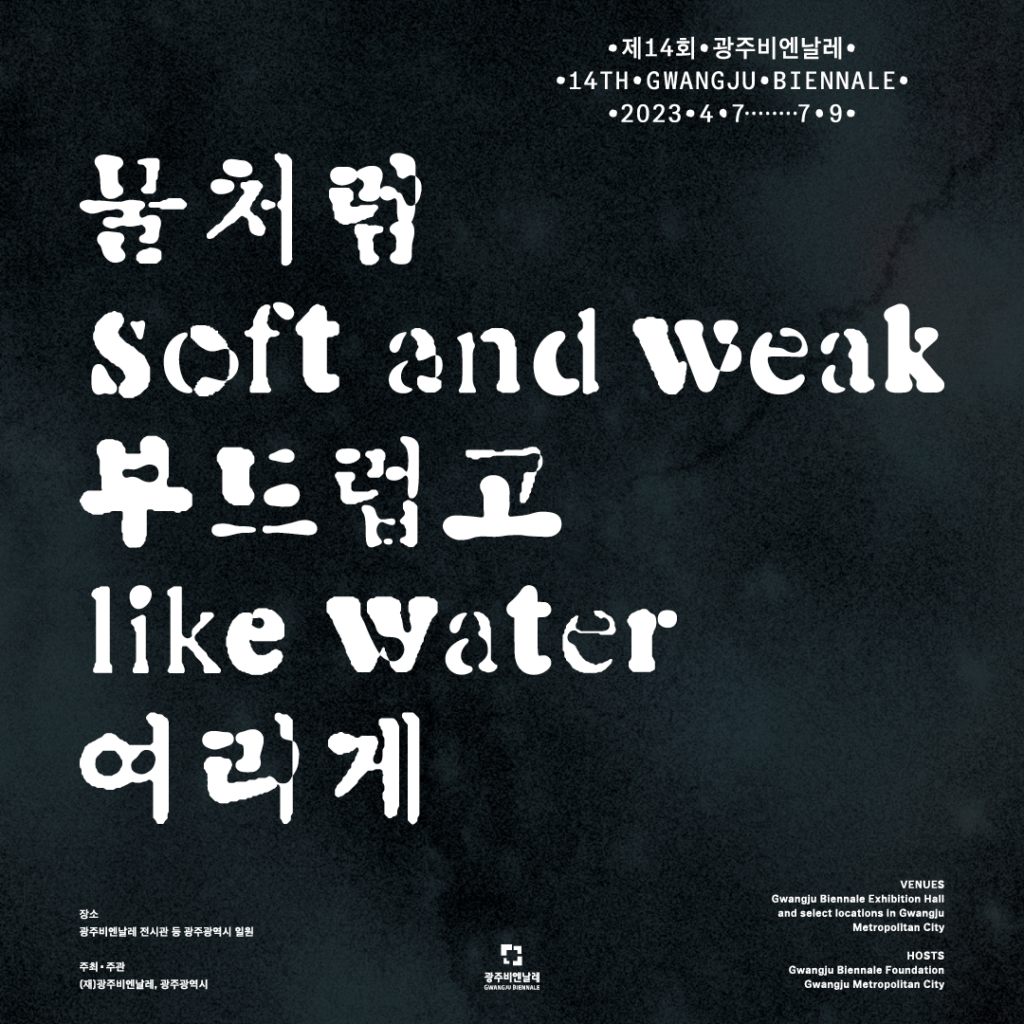
The 14th Gwangju Biennale, soft and weak like water, announces the first participating artists and preliminary details on its curatorial themes, artist selection, artworks, venues and public program. Bringing together around 80 artists from different corners of the globe, the Biennale will present over 40 commissioned projects and new works. The Biennale is curated by Artistic Director Sook-Kyung Lee, alongside Associate Curator Kerryn Greenberg, and Assistant Curators Sooyoung Leam and Harry C. H. Choi.
soft and weak like water takes its inspiration from a chapter of Dao De Jing, a fundamental Daoist text, which speaks of water’s capacity to embrace contradictions and paradoxes. The Biennale proposes to imagine our shared planet as a site of resistance, coexistence, solidarity, and care, by thinking through the transformative and restorative potential of water as a metaphor, a force, and a method. It invites artists to engage with an alternative model of power that brings forth change, not with an immediate effect but with an endurance and pervasive gentleness that flows across structural divisions and differences.
The Biennale will explore its theme through four subtopics: Luminous Halo positions the spirit of Gwangju as a source of inspiration and model for resistance and solidarity; Ancestral Voices highlights transnational artistic approaches for engaging and interpreting traditions to question and challenge modernist ideas; Transient Sovereignty considers the ways in which post-colonial and de-colonial artistic thinking have developed in relation to issues such as migration and diaspora; and Planetary Times explores the potentials and limits of a ‘planetary vision’ on ecological and environmental justice.
Aspiring to understand seemingly disparate yet equally urgent global issues as one entanglement that affects the whole planet and its inhabitants, soft and weak like water gives prominence to voices that speak about systems and practices of knowledge as alternatives to the ones governed by modernist thinking. Ranging from traditional healing, community-based and collective creation to reinterpretation of indigenous crafts, the Biennale presents discourses and practices that highlight ways of existing together, which help locate solidarity in both our affinities and our singularities.
The Biennale’s main venue will be the Gwangju Biennale Exhibition Hall’s five galleries, devoted to the thematic subtopics. Sprawling across the city, neighboring art institutions including the Gwangju National Museum, and smaller venues with distinct characters like Horanggasy Artpolygon will also host parts of the Biennale. Participating artists will respond to the unique architectural, historical, and cultural contexts of these venues.
The Biennale’s exhibition design will be conceptualized by Brussels-based architect Sabine Theunissen and executed in collaboration with Seoul-based architect Jeeyeon Ha. Particular attention will be given to creating environmentally conscious, modular structures that can address the sustainability of temporary, one-off biennales.

